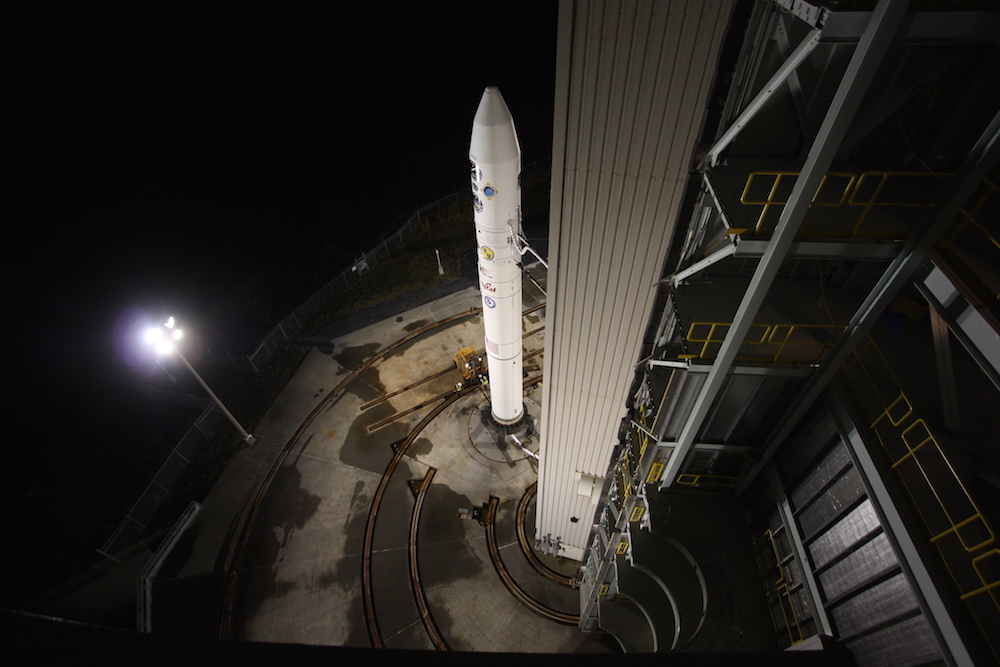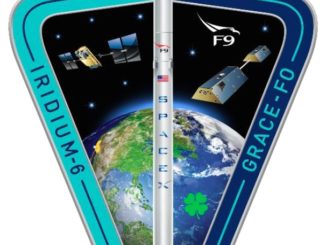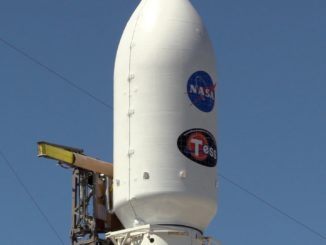
Cape Canaveral will get its first Minotaur rocket launch in 2017, when the solid-fueled booster will send up a U.S. Air Force space surveillance satellite under a contract with Orbital ATK.
An upgraded Minotaur 4 rocket will launch in the second quarter of 2017 with the ORS-5 satellite, a small spacecraft designed to scan for other satellites and debris to aid the U.S. military’s tracking of objects in geosynchronous orbit, a belt around the equator used by defense-related communications birds, television broadcasting stations, and international platforms.
The Massachusetts Institute of Technology’s Lincoln Laboratory is designing and building the ORS-5 satellite, which is also known as SensorSat. The satellite will bridge a potential gap in surveillance of geosynchronous orbit currently provided by the Space Based Space Surveillance, or SBSS, satellite launched in 2010 and due for retirement in 2017.
The Air Force is working on a follow-on mission to the SBSS project for launch in 2021. Technologies demonstrated on ORS 5 could be harvested for the SBSS follow-on mission, officials said.
The ORS-5 mission is under the management of the Pentagon’s Operationally Responsive Space office. Based at Kirtland Air Force Base in New Mexico, the Defense Department set up the ORS office in 2007 to investigate ways to reduce the cost of satellites and launches.
The Pentagon announced the award of the $23.6 million ORS-5 launch services contract to Orbital ATK in a daily digest of Defense Department contracts July 2, but officials did not identify the mission’s launch vehicle or launch site.
A spokesperson with the ORS office confirmed Wednesday the ORS-5 satellite will lift off on Orbital ATK’s Minotaur 4 rocket from Cape Canaveral’s Complex 46 launch pad.
The mission will be the Minotaur rocket family’s first flight from Cape Canaveral after 15 successful launches carrying 74 satellites for the military, NASA and universities from spaceports in California, Virginia and Alaska.
Orbital ATK officials have long touted the Minotaur’s flexibility, claiming it could launch from many bases with minimal modifications to existing infrastructure.
The Minotaur 4 rocket will deploy the ORS-5 satellite — expected to weigh between 80 and 110 kilograms (176-242 pounds) — into a unique equatorial orbit. The satellite is targeting an orbit 600 kilometers — 372 miles — above the equator at an inclination of 0 degrees, the ORS spokesperson said.
The military received only one offer for the ORS-5 contract, which was put out for competitive bidding last year, according to a contract summary posted on the Defense Department’s website.
An industry official familiar with the ORS-5 contract said Orbital ATK looked at launching the satellite on Minotaur rockets from Cape Canaveral, Virginia and the Reagan Test Site at Kwajalein Atoll in the Pacific Ocean. The company even considered proposing launching the mission on a commercial Minotaur booster from French Guiana or Brazil to find a launch base closer to the equator, the official said.
Orbital ATK settled on a Minotaur 4 rocket launched from Cape Canaveral with a new fifth stage, which is required to adjust the satellite’s orbital inclination before deployment over the equator.
The Minotaur 4 rocket usually comes with four stages — three lower boosters culled from the military’s Peacekeeper ballistic missile stockpiles, and a commercial Orion 38 upper stage to maneuver payloads into their final orbit.
For the ORS-5 launch, the Minotaur 4 rocket will use two Orion 38 upper stage motors. The final Orion 38 motor burn will reduce the angle of the ORS-5 satellite’s orbit, redirecting the spacecraft to fly over the equator.
Officials have not decided on a name for the new Minotaur rocket configuration.
The Complex 46 launch pad at Cape Canaveral is managed by Space Florida, a state economic development agency chartered to attract commercial space business to Florida. Originally built in the 1980s for land-based tests of the Navy’s Trident missile, the launch facility lies on military property at Cape Canaveral Air Force Station. Its last space launch occurred in 1999.
The Air Force outlined strict cost constraints for the ORS-5 launch procurement, and the uprated Minotaur 4 configuration was the only way to meet the mission’s performance and price requirements, the official said, adding it was a case of “necessity breeding invention.”
Email the author.
Follow Stephen Clark on Twitter: @StephenClark1.



